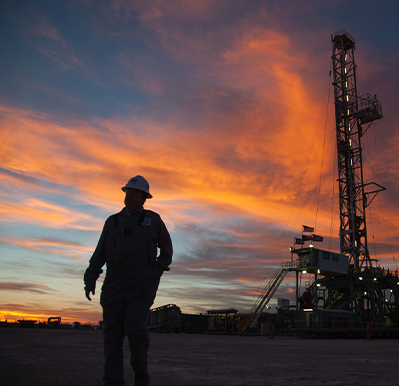- Afrikaans
- Albanian
- Amharic
- Arabic
- Armenian
- Azerbaijani
- Basque
- Belarusian
- Bengali
- Bosnian
- Bulgarian
- Catalan
- Cebuano
- Corsican
- Croatian
- Czech
- Danish
- Dutch
- English
- Esperanto
- Estonian
- Finnish
- French
- Frisian
- Galician
- Georgian
- German
- Greek
- Gujarati
- Haitian Creole
- hausa
- hawaiian
- Hebrew
- Hindi
- Miao
- Hungarian
- Icelandic
- igbo
- Indonesian
- irish
- Italian
- Japanese
- Javanese
- Kannada
- kazakh
- Khmer
- Rwandese
- Korean
- Kurdish
- Kyrgyz
- Lao
- Latin
- Latvian
- Lithuanian
- Luxembourgish
- Macedonian
- Malgashi
- Malay
- Malayalam
- Maltese
- Maori
- Marathi
- Mongolian
- Myanmar
- Nepali
- Norwegian
- Norwegian
- Occitan
- Pashto
- Persian
- Polish
- Portuguese
- Punjabi
- Romanian
- Russian
- Samoan
- Scottish Gaelic
- Serbian
- Sesotho
- Shona
- Sindhi
- Sinhala
- Slovak
- Slovenian
- Somali
- Spanish
- Sundanese
- Swahili
- Swedish
- Tagalog
- Tajik
- Tamil
- Tatar
- Telugu
- Thai
- Turkish
- Turkmen
- Ukrainian
- Urdu
- Uighur
- Uzbek
- Vietnamese
- Welsh
- Bantu
- Yiddish
- Yoruba
- Zulu
what are the differences between casing and tubing?
Differences Between Casing and Tubing in Oil and Gas Operations
In the oil and gas industry, the terms casing and tubing refer to two distinct types of pipes used in the drilling and production processes. Understanding the differences between these two components is essential for professionals in the field, as they play critical roles in ensuring the safety, efficiency, and effectiveness of oil and gas extraction operations.
Casing
Casing is the pipe that is installed in the wellbore after drilling is completed. Its primary purpose is to protect the wellbore from the surrounding formations and to prevent the collapse of the well. Casing serves several critical functions
1. Well Integrity Casing lines the walls of the well, providing structural support. It helps to maintain the integrity of the wellbore which is essential for safe operations, preventing any possible contamination of freshwater aquifers.
2. Isolation of Formations Different geological formations can contain fluids such as oil, gas, or water. Casing isolates these formations to avoid unintentional flow between them, which could compromise the efficiency of the extraction process or result in environmentally hazardous situations.
3. Fluid Control Casing also helps manage the pressures within the well, controlling the flow of fluids during production. This is critical in preventing blowouts or uncontrolled releases of hydrocarbons.
Casing is typically made from steel and is available in various grades and sizes depending on the well's depth and the geological conditions encountered. There are different types of casing such as surface casing, intermediate casing, and production casing, each serving a specific purpose within the overall completion design.
Tubing
what are the differences between casing and tubing?

In contrast, tubing is a smaller diameter pipe that runs through the casing and is specifically designed for the actual production of oil or gas from the well. Its primary role is to transport the hydrocarbons to the surface. The key characteristics of tubing are
1. Production Efficiency Tubing is the conduit through which oil and gas are produced. It is designed to facilitate the efficient flow of these resources, with a focus on maintaining pressure and minimizing friction losses.
2. Ease of Maintenance Unlike casing, which remains in place after installation, tubing can be easily removed and replaced if necessary. This flexibility allows for maintenance activities without requiring a complete re-drilling of the well or pulling the casing.
3. Chemical Resistance Tubing is often manufactured to resist the corrosive effects of the hydrocarbons it carries, as well as any other chemicals present in the well fluids. This durability ensures a longer lifespan and reliable operation during production.
While casing is installed prior to production, tubing is inserted after the casing has been placed. The installation sequence is crucial; once the casing is set and cemented in place, the tubing is run down through the casing to allow for the extraction of hydrocarbons.
Summary
In summary, the main differences between casing and tubing lie in their functions, designs, and installation processes. Casing provides structural support and isolation for the wellbore, ensuring safety and environmental protection. Tubing, on the other hand, is the operating pipe that directly facilitates the production of oil and gas.
Ultimately, both casing and tubing are integral to successful oil and gas operations. Understanding their properties and functions helps ensure optimal production efficiency while maintaining safety standards across the industry. As technology evolves, advancements in both casing and tubing designs continue to enhance the capabilities and performance of wells, leading to improved extraction methods and more sustainable practices in resource recovery.
-
Well Casing Extension Couplings – Applications and InstallationNewsJun.06,2025
-
Types of Crossover Subs in Drilling & CompletionNewsJun.06,2025
-
Key Features of High-Quality Tubing Pup JointsNewsJun.06,2025
-
Installation and Maintenance Tips for Steel Couplings for PipeNewsJun.06,2025
-
How to Select the Right Pup Joint for Oil & Gas OperationsNewsJun.06,2025
-
Applications of Stainless Steel Pipe CouplingsNewsJun.06,2025







